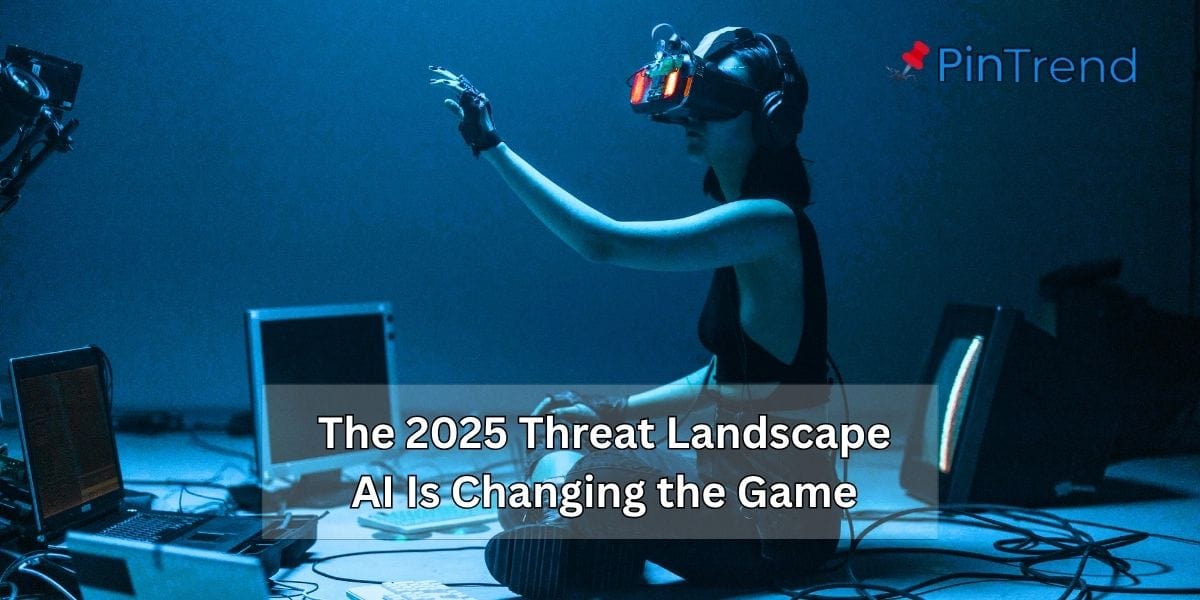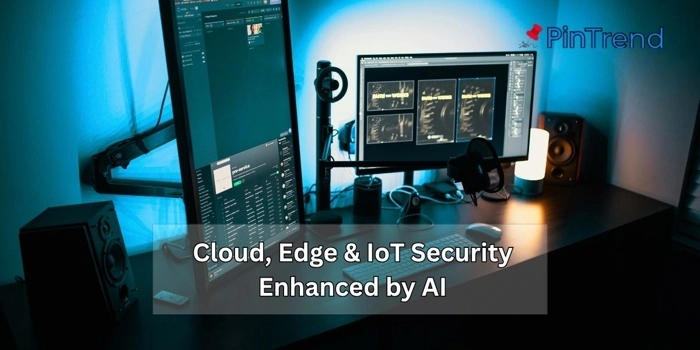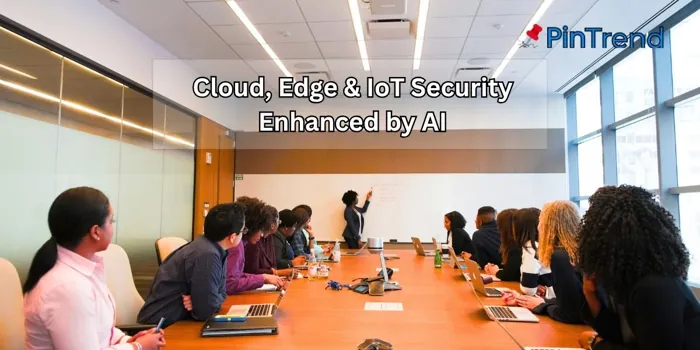The year 2025 marks a turning point for digital defense. As cyber threats grow more sophisticated, artificial intelligence (AI) is becoming the ultimate weapon against hackers. From predictive threat detection to automated security responses, AI is reshaping how organizations protect their networks. AI in cybersecurity trends is not just about stopping attacks—it’s about anticipating them before they happen.
Businesses now rely on machine learning algorithms that evolve faster than cybercriminals can adapt. In this new era, the fusion of AI and cybersecurity doesn’t just enhance protection—it redefines it. The real question is: are we ready for the intelligent defenders of tomorrow?
The 2025 Threat Landscape: AI Is Changing the Game
Cyber threats have never been more sophisticated. In 2025, AI-powered attacks are driving a new level of speed and precision. Hackers are using machine learning algorithms to scan millions of systems for vulnerabilities in seconds.
Generative AI tools now create phishing emails that look eerily real — personalized, error-free, and emotionally targeted. Some cybercriminals even use AI chatbots to mimic customer service agents or company executives to trick victims.

The rise of AI-driven ransomware has been alarming too. These attacks encrypt data intelligently, identifying which files matter most and demanding higher ransoms. According to recent cybersecurity reports, AI-assisted ransomware incidents have increased by 60% since 2024.
This new wave of autonomous cyber threats proves one thing: the attackers are evolving, and traditional security methods no longer stand a chance.
Generative AI and Deepfake Threats: When Reality Becomes a Weapon
Generative AI has become both a creative tool and a cyber threat. Attackers are now using deepfake technology to impersonate CEOs, politicians, and even family members.
Imagine getting a video call from your boss asking for a quick payment approval — but it’s not really them. That’s the dark side of AI in 2025.
Phishing scams are evolving too. With AI-generated voice cloning and synthetic video, fake content feels authentic. Traditional detection systems struggle to tell what’s real.
The good news? AI also offers the defense. Tools powered by deepfake detection models and digital watermarking help verify identities and prevent manipulation. Security firms are training AI systems to spot inconsistencies in facial movements, voice tones, and metadata — an arms race between truth and deception.
Agentic AI and Autonomous Defense Systems
The most revolutionary trend in cyber defense this year is Agentic AI — autonomous, goal-driven systems capable of defending networks without human help.
Unlike rule-based algorithms, agentic AI learns continuously. It doesn’t just react — it anticipates threats before they happen. These systems can isolate compromised devices, block malicious IPs, and even patch vulnerabilities on the fly.
Inside Security Operations Centers (SOCs), autonomous AI agents now assist analysts by correlating threat intelligence, prioritizing alerts, and triggering automated responses within milliseconds.
This form of autonomous cybersecurity is reshaping the industry — giving defenders speed that finally matches attackers.
Companies like Darktrace and Cynet already integrate agent-based AI systems that act as real-time digital bodyguards. The message is clear: in 2025, AI defends as fast as AI attacks.
Explainable AI (XAI) and Building Trust in Cybersecurity
The biggest issue with AI-driven defense systems isn’t accuracy — it’s trust.
Many organizations hesitate to adopt AI tools because they can’t explain why a model made a certain decision. That’s where Explainable AI (XAI) comes in.
XAI in cybersecurity helps analysts understand why the AI flagged a specific event as a threat. It visualizes patterns, reasons, and correlations behind every decision. This builds transparency, reduces false alarms, and ensures accountability in automated defenses.
Industries like finance, healthcare, and defense rely on explainable models to stay compliant with strict regulations. And as AI governance tightens globally, XAI tools are becoming a must-have rather than a luxury.
Cloud, Edge & IoT Security Enhanced by AI
With businesses moving toward multi-cloud and edge computing, new vulnerabilities emerge daily. AI is the only tool powerful enough to monitor such complex, distributed environments in real time.
In 2025, AI in cloud security goes beyond intrusion detection. It performs predictive threat analytics, scanning billions of user activities and network logs to identify anomalies.

Meanwhile, Edge AI helps secure IoT devices by detecting unauthorized access locally before it spreads. Imagine a smart factory where AI agents guard every connected sensor — stopping attacks at the source.
Integrating Zero Trust frameworks with AI ensures that every user, device, and transaction is verified continuously, no matter where it originates.
AI-driven IoT protection, combined with cloud-native threat intelligence, is redefining digital safety from the inside out.
Challenges and Risks of AI in Cybersecurity
While AI in cybersecurity promises massive benefits, it also introduces new risks.
The most concerning is adversarial AI — attacks designed to trick security algorithms. Hackers use data poisoning and model evasion tactics to mislead AI systems into ignoring real threats.
False positives also overwhelm security teams. An overactive AI can block legitimate traffic, causing costly downtime.
Then there’s the ethical dilemma. AI models learn from enormous datasets that may contain sensitive or biased information. Without proper governance, these systems risk violating privacy or unfairly targeting users.
Small businesses face another challenge — resource limitations. Deploying AI-based defenses demands computational power and expert oversight that many can’t afford.
Balancing innovation with responsibility has never been harder.
Regulation, Ethics & AI Governance in 2025
As AI’s role in cybersecurity expands, so do global regulations.
The EU AI Act and U.S. NIST AI Risk Framework are setting strict rules around transparency, fairness, and accountability in AI systems. Companies must prove their cybersecurity AI tools are safe, explainable, and ethically aligned.
In 2025, AI governance isn’t optional — it’s law. Businesses are required to maintain audit trails, human oversight, and bias mitigation frameworks for any automated security model.
Ethical AI principles like accountability, interpretability, and fairness now define whether an organization can trust its own defense systems.
Simply put, if your AI defense can’t explain itself, regulators won’t trust it — and neither should you.
Future Trends Beyond 2025: The Next Cyber Frontier
Looking ahead, several game-changing trends are emerging:
1. Quantum + AI Hybrid Security — combining quantum computing and AI to break or strengthen encryption.
2. Predictive Threat Intelligence — AI models forecasting attacks before they happen.
3. Autonomous Red Teaming — AI attacking AI to test resilience.
4. Continuous Learning Cyber Models that evolve with each new breach.
The future of AI cybersecurity lies in systems that not only react but adapt, learn, and self-improve — creating an endless loop of evolution between attackers and defenders.
Practical Recommendations for Businesses
To stay ahead in 2025, companies must act strategically:
1. Adopt Explainable AI tools that justify their alerts.
2. Integrate AI with human analysts — automation plus intuition wins.
3. Start small with AI-powered detection systems before scaling.
4. Invest in AI governance early to stay compliant.
5. Educate teams — every employee must understand AI risks.
A balanced defense combines machine precision and human judgment — one learns, the other interprets.

Conclusion
The era of manual cybersecurity is over. In 2025, AI defines both the problem and the solution. Attackers weaponize it; defenders harness it.
Organizations that adapt to these AI in cybersecurity trends will build resilience; those that don’t will face extinction in an AI-driven battlefield.
In this new world, the question isn’t “Can AI secure us?” — it’s “Can we secure AI itself?”
Frequently Asked Questions
1. What are the top AI cybersecurity trends in 2025?
Generative AI threats, agentic AI defense, explainable AI, and AI governance top the list.
2. Can AI fully prevent cyberattacks?
No — but it can detect, respond, and minimize damage faster than any human team.
3. What is agentic AI in cybersecurity?
It’s a self-learning, autonomous system that acts without human intervention to prevent threats.
4. How can small businesses use AI for cybersecurity?
By using affordable AI-based endpoint security and cloud monitoring tools.
5. Is AI regulation affecting cybersecurity tools?
Yes — global frameworks like the EU AI Act demand explainability and transparency.


